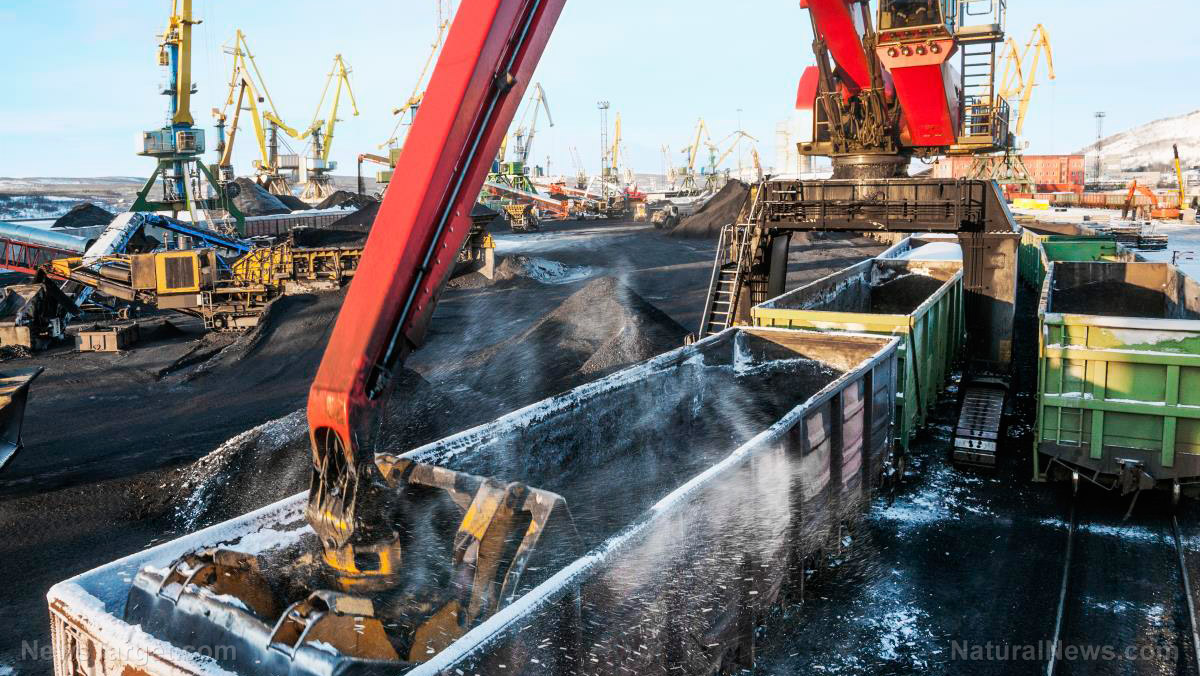Coal-hating liberals don’t seem to understand that coal is needed to make STEEL, and without steel, modern society can’t function at all
06/26/2017 / By Ethan Huff

The modern-day meme about coal is that it’s just a filthy fossil fuel with no redeeming value beyond pollution for profit. But the reality is that society still needs coal – and desperately – not only for energy production but also to produce steel, which is vitally important to build many of the things we all take for granted.
Cars, buildings, surgical equipment – these things and so much more wouldn’t exist were it not for steel production. According to the American Iron and Steel Institute (A.I.S.I.), the steel industry is the number one user of coal, which serves as a fuel for blast furnaces and an ingredient in the production of metallurgical coke.
Coal is also used to make the steam and electricity required for steel production, as well as in the direct smelting of the iron itself. Very few anti-coal liberals understand these truths, which makes it easy for them to protest the use of coal in favor of “clean” energy technologies like wind and solar power.
“Global steel production is dependent on coal,” says the World Coal Association. “70 percent of the steel produced today uses coal. Metallurgical coal – or coking coal – is a vital ingredient in the steel making process.”
Renewable energy has its place, but so does coal, especially now that there are ways to produce energy from coal without producing excess pollution. Truth be told, clean coal technology is having a much bigger impact on fighting greenhouse gas emissions than any other technology currently out there, though you wouldn’t know it from listening to the media.
Furthermore, coal is what makes much of the world go round. Without it, many modern conveniences that people take for granted, from affordable electricity (in areas where green power doesn’t exist) to cars, would cease to exist. It simply isn’t possible to power the entire world using windmills and solar farms – not to mention how much land space these technologies would gobble up if implemented on a massive scale.
“Today coal produces more than 40 percent of the world’s electricity, a foundation of modern life,” writes Charles Mann for WIRED. “And that percentage is going up: In the past decade, coal added more to the global energy supply than any other source.”
Your iPhone, laptop only exist because of coal
When President Trump made the decision recently to pull the United States out of the disastrous Paris Climate Accord, one of his reasons was that industries like coal production were simply moving their operations overseas where they could pollute more freely. In China, for instance, clean coal standards aren’t necessarily as strict as they are in America, which is why many multinational corporations move there.
Take Apple, for instance. All of those shiny iPhones and MacBook laptops are being produced in large factories that are powered by, you guessed it: coal. In fact, much of the Chinese population’s emergence from poverty is a result of coal – or more specifically, the industrialization that was brought about because of it. More than 75 percent of China’s electricity comes from coal, which is used to manufacture consumer goods, smelt steel, construct cement, and heat people’s homes.
All of that stuff not only benefits the Chinese, but also Americans and others. Nearly half of the world’s steel currently comes from China, along with about half of the world’s cement. If it weren’t for coal, the world would still be living in the dark ages.
“Coal is too low-cost, too plentiful, and too available from reliable sources to be replaced,” says fuel analyst John Dean, president of the J.D. Energy consulting firm. “China is putting in solar and wind power at a tremendous pace, but it will have to use more and more coal just to keep up with rising demand.”
Sources for this article include:
RECENT NEWS & ARTICLES
COPYRIGHT © 2017 ENVIRON NEWS




















